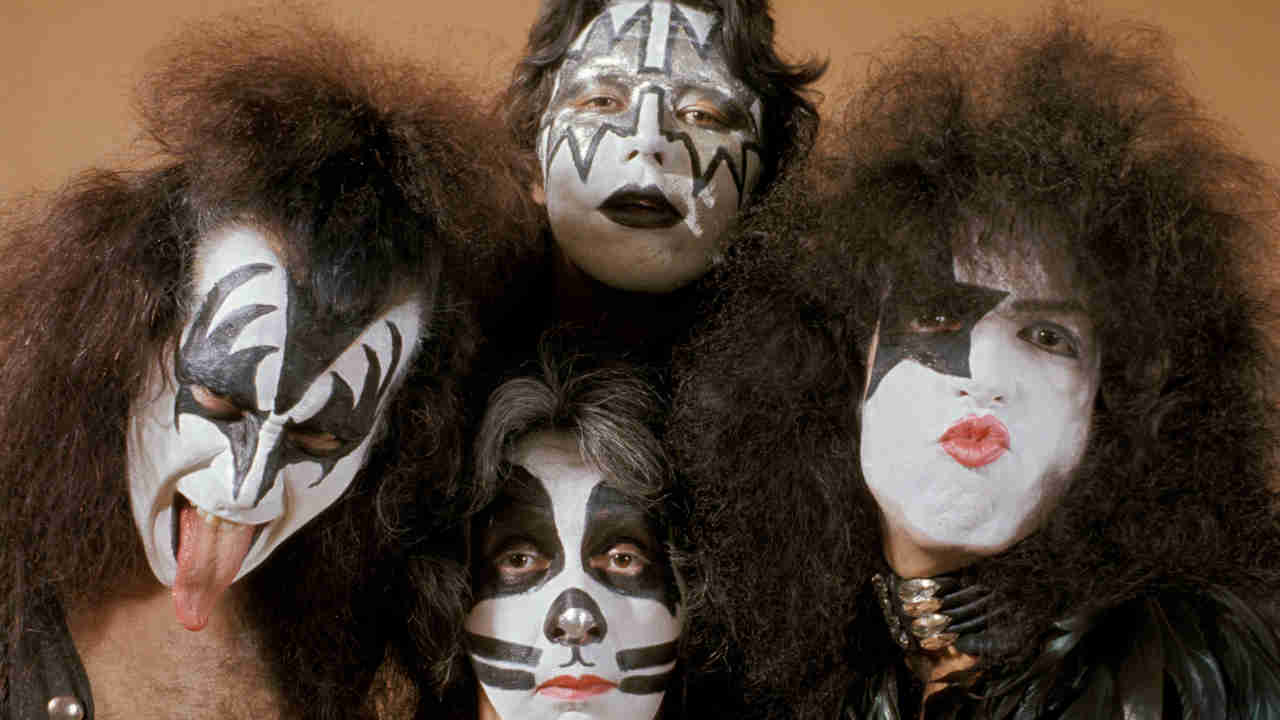By 1977, Kiss were the most famous rock’n’roll band in America – and they knew it. In 2012, singer and guitarist Paul Stanley looked back at the year of Love Gun, Alive II, Madison Square Garden and some dedicated hedonism.
1977: How was it for you?
It was an incredible time for us. Everything had kind of exploded and we found ourselves trying to fortify Kiss’s place in rock’n’roll. I wanted to see the band become the biggest it could possibly be. To reach the Olympus of Rock.
There were two Kiss albums that year. One was Love Gun, which featured Plaster Caster. Were you ever ‘commemorated’ by Cynthia Plastercaster?
That song was more of a fake homage to the person who spearheaded that movement. But no, I never had it done to me. It always sounded a bit painful. I can think of better things to do with an erection than stick it into a load of dental gel.
The other Kiss album that year was Alive II.
Sonically, I never felt the studio albums lived up to what we were doing live. They just didn’t have the kick, the balls or the sonic enormity of what we did live. Alive II captured the experience of being at a Kiss show and what we stood for.
Playing Madison Square Garden on your 25th birthday must’ve been some buzz.
Oh yeah. At that point it seemed like I’d entered the realm that I’d aspired to. It hadn’t been too long since I’d been a cab driver in New York. One night I drove a couple to Madison Square Garden to see Elvis Presley and I remember pulling up and thinking: “One of these days people are going to be coming here to see me.” So it was like being on top of Everest.
Is it true that you’d fly girlfriends to and from gigs on your Lear Jet?
I’d do that sometimes. And not just on tour. I really didn’t cultivate much of a home life, so I’d come home from tour and go: “OK, what do I do now?” It wasn’t unusual to pick up the phone and fly girlfriends in.
Is it true that you once threw an orgy with girls dressed in Kiss make-up?
I don’t know if any orgies were ‘thrown’. Those things had a way of happening on their own. Whether there was Kiss make-up or not I can’t say, but those kinds of situations weren’t uncommon.
What sort people were you rubbing shoulders with?
It was a Who’s Who from politicians to authors. Whenever I’d meet Andy Warhol he’d say: “Come on down to the Factory and I’ll do your portrait.” I never did it, and one of my biggest regrets from that time was not doing a Warhol portrait.
1977 was the year of disco. Did you ever head off to Studio 54 on a white horse, like Bianca Jagger once did?
The press photos of Studio 54 always focused more on the anomalies rather than what was really going on. Most of the people weren’t dressed up outrageously. I’d just go in a pair of jeans and a tank top. I went there to dance, for God’s sake! I didn’t see what was going on at Studio 54 as disco, I saw it as hedonism with a beat. It was much more about unbridled physicality and sexuality.
And CBGB?
I went there, but that scene was based more on wanting to express yourself than knowing how to play an instrument well enough. There were a lot of artsy bands at CBGB that left me cold, like Richard Hell & The Voidoids and all that nonsense.
Where did Kiss fit into American culture in 1977?
We were American culture. A Gallup poll voted us the number one band in the country. We were a reflection of what people were enamoured with. And the fear had gone, at least from my mind. I was a kid from a lower middle class family, so to taste the good life was incredible. I found myself praying once or twice: “Dear God, don’t take this away from me. Please be kind to this poor soul!”
Originally published in Classic Rock issue 173

